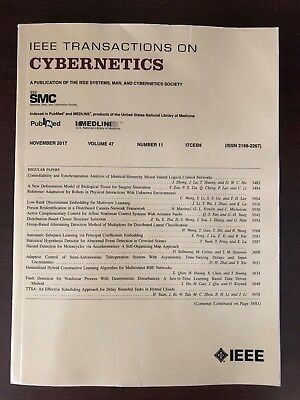Unsupervised Feature Selection for High-Order Embedding Learning and Sparse Learning
IF 9.4
1区 计算机科学
Q1 AUTOMATION & CONTROL SYSTEMS
引用次数: 0
Abstract
The majority of the unsupervised feature selection methods usually explore the first-order similarity of the data while ignoring the high-order similarity of the instances, which makes it easy to construct a suboptimal similarity graph. Furthermore, such methods, often are not suitable for performing feature selection due to their high complexity, especially when the dimensionality of the data is high. To address the above issues, a novel method, termed as unsupervised feature selection for high-order embedding learning and sparse learning (UFSHS), is proposed to select useful features. More concretely, UFSHS first takes advantage of the high-order similarity of the original input to construct an optimal similarity graph that accurately reveals the essential geometric structure of high-dimensional data. Furthermore, it constructs a unified framework, integrating high-order embedding learning and sparse learning, to learn an appropriate projection matrix with row sparsity, which helps to select an optimal subset of features. Moreover, we design a novel alternative optimization method that provides different optimization strategies according to the relationship between the number of instances and the dimensionality, respectively, which significantly reduces the computational complexity of the model. Even more amazingly, the proposed optimization strategy is shown to be applicable to ridge regression, broad learning systems and fuzzy systems. Extensive experiments are conducted on nine public datasets to illustrate the superiority and efficiency of our UFSHS.高阶嵌入学习和稀疏学习的无监督特征选择
大多数无监督特征选择方法通常只探索数据的一阶相似度,而忽略了实例的高阶相似度,容易构造次优相似图。此外,由于这些方法的复杂性,特别是当数据的维数很高时,往往不适合进行特征选择。为了解决上述问题,提出了一种新的方法,称为无监督特征选择的高阶嵌入学习和稀疏学习(UFSHS),以选择有用的特征。具体来说,UFSHS首先利用原始输入的高阶相似度构建最优相似图,准确揭示高维数据的本质几何结构。构建统一的框架,结合高阶嵌入学习和稀疏学习,学习具有行稀疏性的合适的投影矩阵,从而选择最优的特征子集。此外,我们设计了一种新的替代优化方法,根据实例数和维数之间的关系分别提供不同的优化策略,从而显著降低了模型的计算复杂度。更令人惊讶的是,所提出的优化策略被证明适用于岭回归、广义学习系统和模糊系统。在9个公共数据集上进行了大量的实验,以说明我们的UFSHS的优越性和效率。
本文章由计算机程序翻译,如有差异,请以英文原文为准。
求助全文
约1分钟内获得全文
求助全文
来源期刊

IEEE Transactions on Cybernetics
COMPUTER SCIENCE, ARTIFICIAL INTELLIGENCE-COMPUTER SCIENCE, CYBERNETICS
CiteScore
25.40
自引率
11.00%
发文量
1869
期刊介绍:
The scope of the IEEE Transactions on Cybernetics includes computational approaches to the field of cybernetics. Specifically, the transactions welcomes papers on communication and control across machines or machine, human, and organizations. The scope includes such areas as computational intelligence, computer vision, neural networks, genetic algorithms, machine learning, fuzzy systems, cognitive systems, decision making, and robotics, to the extent that they contribute to the theme of cybernetics or demonstrate an application of cybernetics principles.
 求助内容:
求助内容: 应助结果提醒方式:
应助结果提醒方式:


